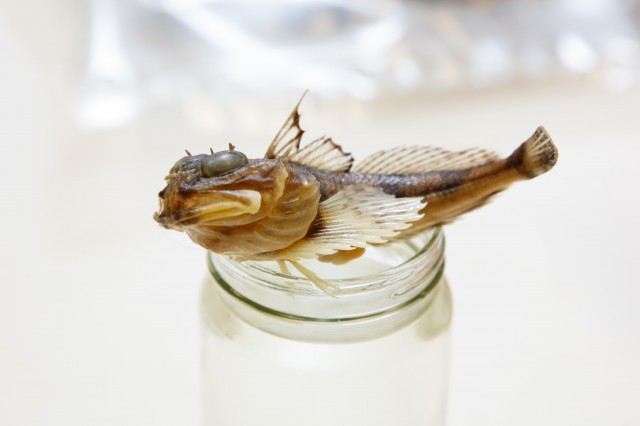Stepping Stones Across Oceans
NHM’s Ichthyology Curator visits two remote islands to understand how fish move around our planet.
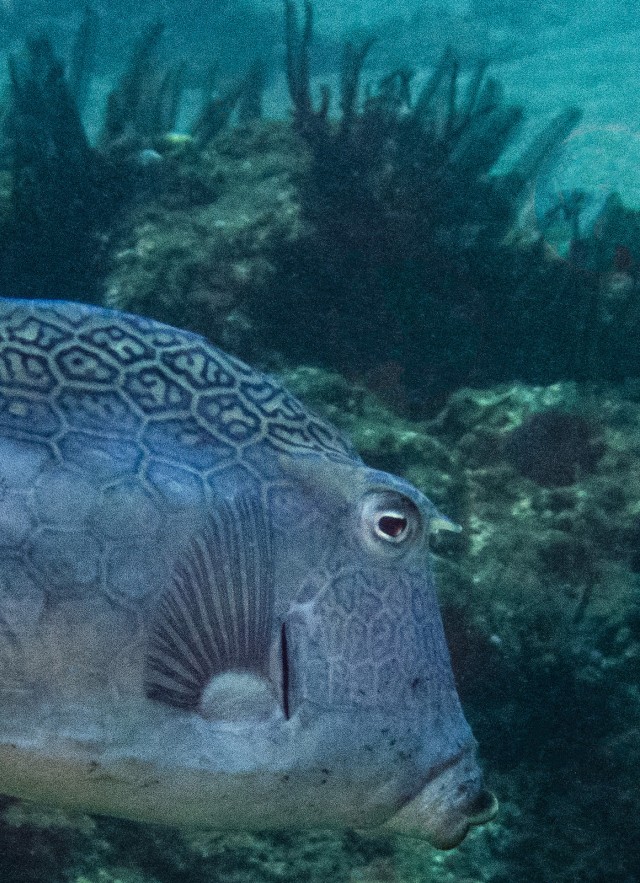
Published June 7, 2023
How does life get where it is? In the case of fish you’re probably thinking they swim, but crossing oceans’ worth of distance in water is an unfathomable challenge and a deep mystery.
While barriers to animal travel on land are obvious to us—think mountain ranges, glaciers, deserts—the vast expanses between ocean regions have their own deserts and abyssal ranges more inhospitable to life than anything on land. And understanding how fish have come to where they are is more vital than ever before. Deciphering the journey of fish life means understanding how their marine ecosystems work and how global challenges like climate change might affect life in these massive marine expanses.
Biogeographers like Dr. Bill Ludt, NHM’s Assistant Curator of Ichthyology are trying to unravel the mysteries of how fish species make it across incredible distances to establish themselves in new habitats and how new species form. Scientists speculate that some fish are using some of the most remote pieces of land on Earth to reach new habitats. “There are a scattering of offshore oceanic islands around the world that are really isolated but that have been hypothesized to be kind of stepping stones connecting different major regions of the world's oceans,” says Ludt.
“Some species can make it across large expanses of open ocean,” Ludt says. “And the questions are, do they do so regularly, is there a lot of gene flow, and are they using these offshore islands as the stepping stone to get between major regions? Or was it one historic connection?”
The answer to these questions is locked in fish DNA. Gene flow, the movement of genetic materials across animal populations—in this case through fish migration—leaves its mark in the genetic codes of the fish able to make these oceanic odysseys from distant islands. Ludt visited two of these possible “stepping stones’ in globe-spanning expeditions, encountering marine life from the gargantuan to the gorgeous, all in search of unraveling the mysteries of how fish move across our planet.
Mexico’s Galapagos
The islands Socorro, Clarion, San Benedicto, and Roca Partida make up the Revillagigedos Archipelago, 335 miles south of Baja California. Declared a World Heritage Site by UNESCO and a marine preserve and national park of Mexico, these far-flung volcanic islands are famed for their unique ecosystems made possible by their isolation.
Even on modern dive boats, it’s a serious voyage. After flying into Cabo San Lucas, it’s a 20-hour boat ride from the port to the first island, Socorro, and another 28 to the furthest island Clarion. NHM researchers hadn’t collected fish specimens from their waters in 50 years.
“Some people think that the Revillagigedo Islands is a connection from the Central Pacific to the Eastern Pacific,” says Ludt. “There's not a lot of overlap between species between the two locations, but there are some species that can be found in both.”
These overlapping species could hold the key to understanding whether or not the Revillagigedos is a pathway for fish species to cross between regions. One of the ways Ludt studies fish is through their DNA—the more closely two fish specimens' DNA lines up, the more definitively researchers can trace their geographic history. “You take little snippets of the genome that are literally called SNPS (pronounced ‘snips) for ‘single nucleotide polymorphism ’ and you look at the genetic differences in the code. You're looking at their 23andme profile, where do they come from? Who are they related to?”
As part of a well-protected marine reserve (the only other people allowed are military and a handful of permitted scuba diving operators), these remote islands attract charismatic marine giants like manta rays making the Socorro a magnet for divers and underwater photographers. The un-stressed fish life led to incredible encounters. While most divers come to see things like sharks, bumping into a tuna made the biggest impact on Ludt. “It's just majestic to swim with those things—I mean, it's cooler than sharks for sure. You're not going to see a big pelagic fish like that in most dive spots.”
Protection from fishing and other industry means there’s a lot to see at Revillagigedos, and capturing that wildlife on film was a major goal of the expedition. Underwater photographers took photos for the vast online compendium of fishes—Shorefishes of the Eastern Pacific online information system—a bilingual photographic encyclopedia of fishes founded by the Smithsonian, while Ludt and other researchers collected specimens for museum collections.
Crowd-sourced science and photographic records are invaluable resources, but there are stories only museum specimens can tell. Through genetic analysis and by collecting across time and space, existing collections become even more valuable especially when it comes to fish. While many land animals can be studied throughout their life cycles, during the earlier parts of fish life —from eggs to larval stages—fish are so small that it’s difficult to study them without looking at DNA.
“The larval life cycle is kind of a black box,” says Ludt. Young fish and their eggs are extremely small, a drop in the bucket when compared to the enormity of the ocean. Collection specimens provide a backlog of DNA made even more valuable with new scientific approaches like environmental DNA (eDNA). eDNA lets researchers discover what’s swimming in a water sample through traces of DNA left in the water, but it needs a reference library of DNA from known species to work. New tools like this will only increase the importance of new collections for unlocking that black box.
“There's this huge gap where there are no islands at all, what we call the East Pacific barrier,” Ludt says. “It's just an open expanse of ocean, and there's nowhere for fish larvae to settle. If they find themselves out there, they're not going to make it because there's just no habitat. And so that barrier has really separated the eastern Pacific from the Central Pacific for quite some time.”
Specimens collected from Revillagigedos will help us understand how fish are bridging that incredible gap.
St. Helena Island
Ludt’s second run of globe-trotting fieldwork took him to one of the most isolated islands in the world—St. Helena, hundreds of miles off the Horn of Africa. (It’s where you drop off Napoleon when you absolutely need to make sure he doesn’t escape again.) The nearest islands are 700 and 1,300 miles away, the closest mainland port is more than 1,000 miles.
The Benguela Upwelling, a current of cold water that makes the area attractive to great whites, also prevents the warm water fish species of the Indian Ocean from spreading into the Atlantic. “These cold waters coming from deep prevent most of these tropical, or warm water, fishes that are from the Indian Ocean from crossing into the Atlantic. If their larvae find their way in that area, or if adults ever get pushed off track and find their way, it is too cold for them. But every once in a while, a couple of groups can make it through and we want to know how and how often.”
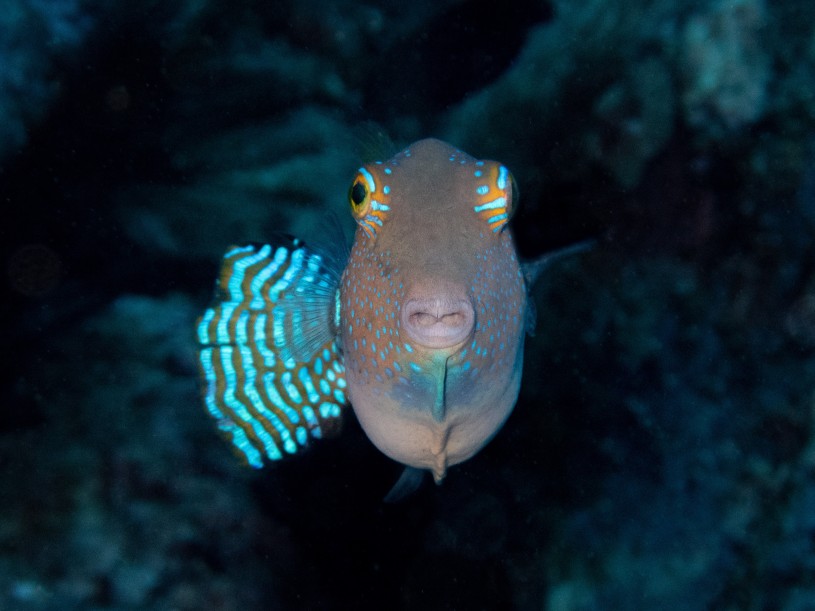
Photo by Bill Ludt
Even for modern travelers, reaching St. Helena is still a challenge. “It’s the only time I've had a pit stop on a plane to refuel where you don't get off the plane,” Ludt says. Planes traveling to St. Helena need to be fueled up on Walvis Bay on the mainland—nearly 1,400 miles away—to be able to turn around in case of inclement weather. After an hour and a half of waiting for the weather to clear, Ludt and his team were able to take off and land on the distant island in the nick of time. “20 minutes after we landed, and there was zero visibility around the whole airport,” says Ludt. “There are very few species that are shared between St. Helena and the rest of the Atlantic because it's so isolated…there's not as much gene flow and so things have had time to become their own species there.”
Some of the scientists worked on marine transects, diving along a planned route and counting fish every few hundred meters, measuring the distance with underwater rulers while Ludt and other researchers collected specimens.
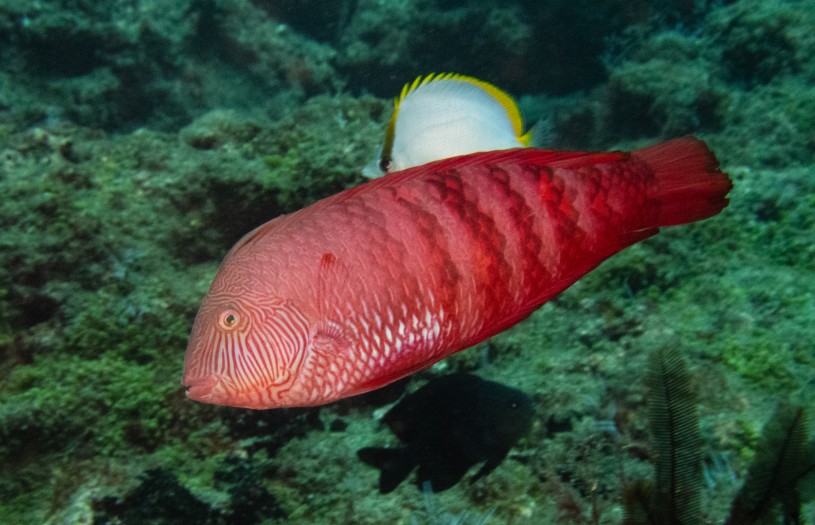
Photo by Bill Ludt
St. Helena’s extreme isolation makes it a phenomenal spot to see evolution in action. “Like most offshore oceanic islands, diversity is lower,” Ludt says.” At St. Helena almost every genus is represented by a single species, so there are very few species filling up the roles that you would traditionally see many species filling up on a more diverse reef. There are very few species that are shared between St. Helena and the rest of the Atlantic because it's so isolated…there's not as much gene flow and so things have had time to become their own species there.”

It’s kind of weird to see but the other cool thing is that almost everything you see is endemic, meaning that it's only found there or on Ascension, the other really isolated offshore island that's far, but not too, far from Saint Helena,” says Ludt. “Almost everything there is a new species for our collection.”
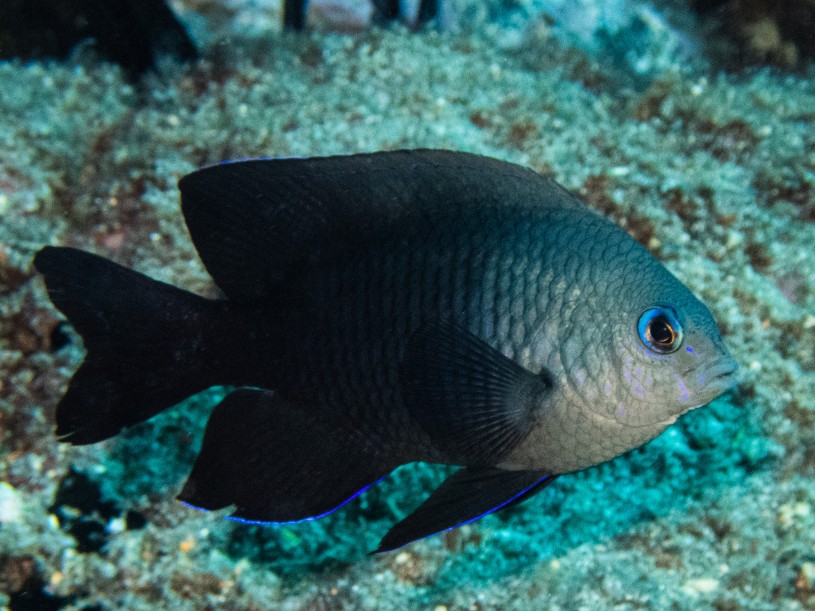
Expanding the geographic footprint of the collections grows the kinds of research that can be done with specimens, widening the scientific possibilities in ways we can’t fully predict. The advanced DNA analyses and computerized tomography (CT scans) Ludt uses in his research weren’t around a century ago. We can’t know how researchers a century from now will use the collections in new ways, but we can be certain they’ll be invaluable to furthering our understanding of life in our oceans.
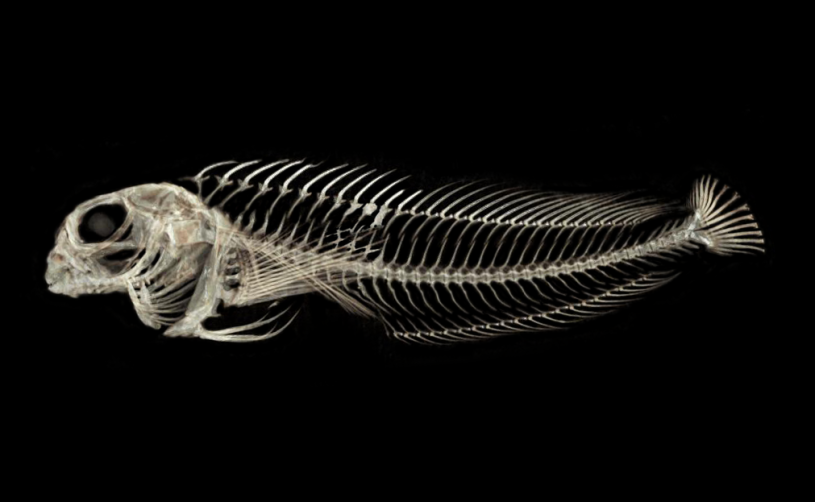
“There's always a big difference between reading about certain locations—what the habitat is like, what fishes are there—versus experiencing them in real life,” Ludt says. “I think that gives you a different perspective on things that might be driving some of the patterns that we see on our planet.”
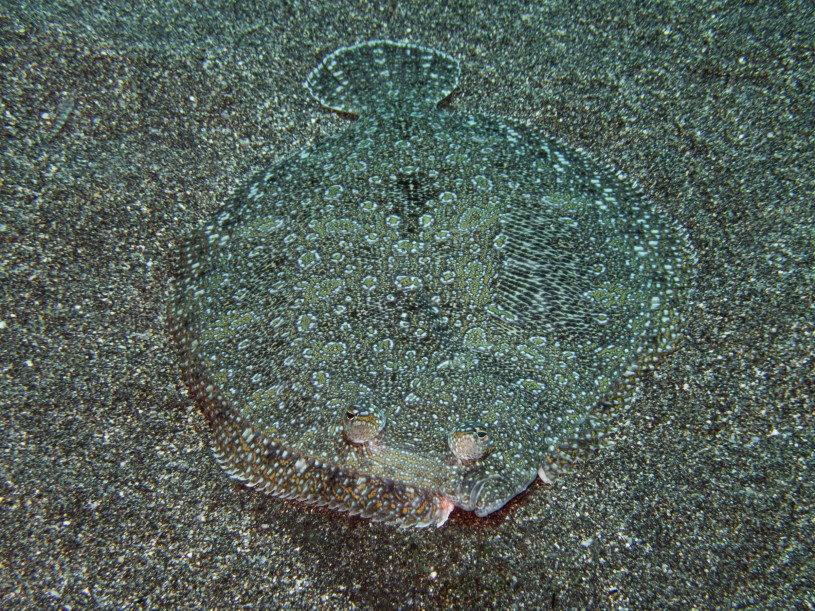
Those patterns will be evident to future researchers across the globe thanks to the efforts of Ludt and the other scientists on these trips. The specimens from these adventures will live in perpetuity within NHM and other institutions, ready to be accessed by researchers looking to tell the story of how life on Earth moves, studying the epic journeys inside fish DNA.
